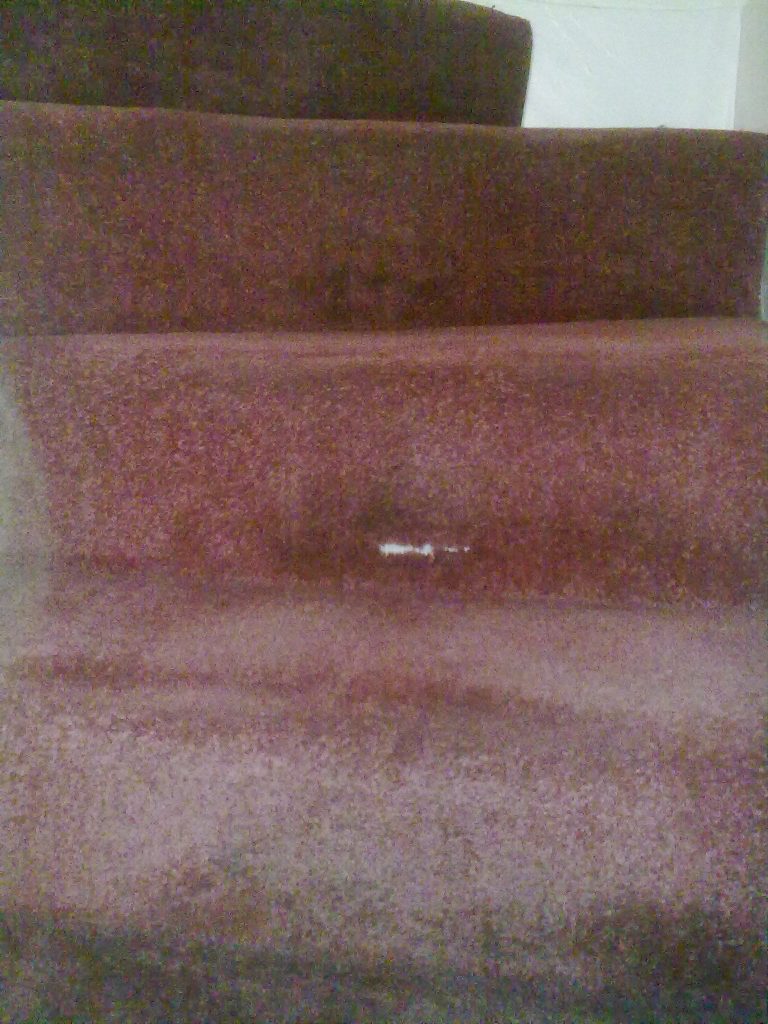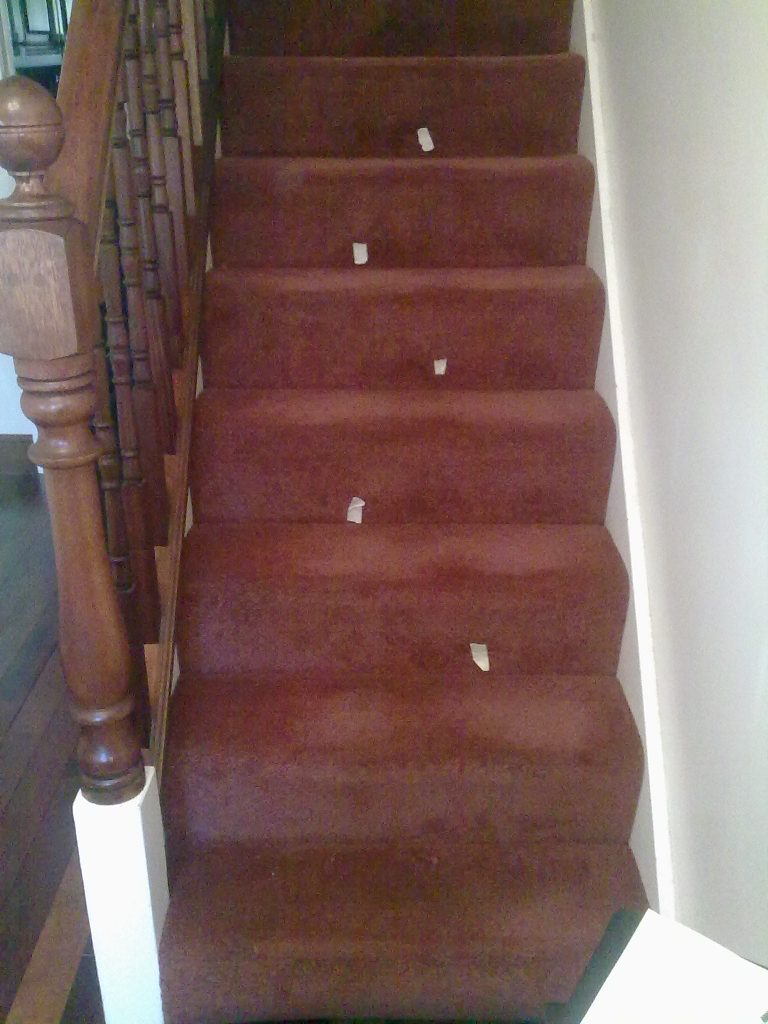Disappearing Pile
Nature of Issue: Carpet wearing to stair up-treads
Carpet Name: Christchurch Twist
Type: Wool mix, Tufted
Colour: Terracotta
Overview:

Purchased the carpet believed to have a five year wear guarantee. About two years ago homeowner noticed carpet fibres becoming loose from the carpet on the stair up-treads.
The homeowner contacted the retailer to inform them of her concern of the fibre loss. The retailer sent an inspector to assess the carpet. They concluded there was no fault. The homeowner, not satisfied with the assessment. They were advised by the Citizen Advice Bureau to have an Independent Inspection carried out.
Inspection

When viewing, you can plainly see some areas on the up-treads where the fibre is lost, this exposes the backing of the carpet. On closer inspection you can see more minor fibre loss. On gently pulling the fibre within the damaged areas, the fibres seem to pull out very easily.
There are a number of causes attributed to fibre loss, as follows:
- Over Treatment in Processing
- Differential Wear of Components
- Sunlight Degradation
- Under-specification
- Sub-floor Faults
- Insect Damage
- Installation Damage
- Biological damage
- Local usage
- Over treatment in processing

I would consider this highly unlikely because the wear has only occurred in one area of the stairs and taken 3-4 years to develop rather than 3-12 months.
- Differential Wear of Components
As the wear is only occurring on a single area of the steps, this cannot be the cause of the damage.
- Sunlight Degradation
The damaged areas on the stairs are not in direct sunlight, and do not contain enough polyolefin, which degrades in sunlight, to cause the attributed damage.
- Under-specification
The fibre, carpet weight, blend, and type (twist) and backing (tufted), of this type of carpet is typical for use in heavy domestic areas such as; lounges, hall, stairs, landing & bedrooms etc. This carpet is not under-specified.
- Sub-floor Faults
As the wear is on the up-treads of the stairs, it is not possible for a sub-floor fault to be causing the damage to the carpet.
- Insect Damage
It is normally possible to see evidence of insect damage by seeing powdery residues, tiny white eggs or the larvae itself. I saw no evidence of insect damage and would have expected to see it on the treads of the carpet as well as the up-treads.
- Installation Damage
This would have been noticed a very short time after installation. This can safely be ruled out as a possible cause of damage.
- Biological damage
There were no signs of mold or mildew. A damp test over the carpet area confirmed it was completely dry. So, not possible to be damaged by mold/mildew.
- Local usage
Having considered and ruled out all other possibilities there remains one other technical explanation for the damage.
During the visit I placed some masking tape to the far side of each damaged area on the up-treads. The damage appears consistent to how people usually walk up a flight of stairs.
The wool can become weakened and damaged when the up-tread regularly comes in contact with the front of shoes when walking up the stairs.
Other Research
I also investigated the type of carpet ‘Christchurch Twist’ to find out about the suspected five year guarantee suggested by the homeowner. There was no evidence of a five year wear guarantee on the documents that were provided with the carpet. I carried out further research to see if I could find evidence of this.
The carpet is discontinued, so there is minimal information about it. It was also known as a ‘Balta Christchurch Twist’ and ‘Balta Hilton Saxony’. However, I was not able to find any details about a five year wear guarantee for this type of carpet. There is also no other complaint of this cause for this type of carpet as far as I am aware or could find.
Conclusion:
The only evidence as to the cause of the wear is as described in the ‘local usage’ paragraph above.
Therefore the only logical conclusion I can come to is that there is no obvious evidence of a manufacturing fault. The damage is attributed to a phenomenon known as ‘shoeing’ or ‘toeing’.
Unfortunately for Homeowner there is very little recourse for this, and any legal attempts to pursue a refund for the carpet will very likely prove costly in both time and money and done in vain.
END OF REPORT